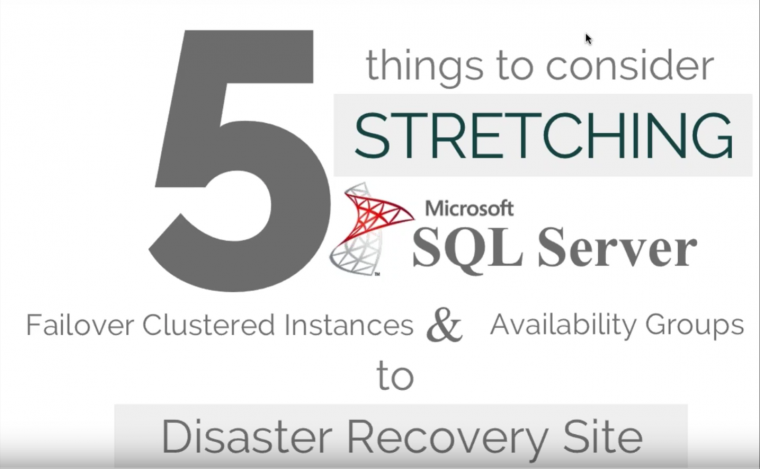
This week, I had the amazing opportunity to do a webcast for the PASS High Availability and Disaster Recovery Virtual Chapter covering the five things that you need to consider when deploying SQL Server Failover Clustered Instances (FCI) and Availability Group (AG) replicas in a Disaster Recovery Site.
I’ve written several blog posts about this topic and have helped customers implement their SQL Server FCIs and AGs across multiple data centers. And it’s always interesting to see different reactions from both my customers and those who attend my presentations when I talk about these things – especially the SQL Server DBAs. That’s because all of these things have nothing to do with SQL Server.
I remember one guy asking, “If these have nothing to do with SQL Server, then, why do we need to know them? It’s not part of my job description.“
While these things have nothing to do with SQL Server, the availability and reliability of our SQL Server FCIs and AGs are very much dependent on them. As SQL Server DBAs, your job is now dependent on the things that you’re not even aware are dependent on. If you know that your job is dependent on something, you certainly wouldn’t brush that aside and claim that it isn’t part of your job description, would you?
And that’s the premise of this presentation. It doesn’t only help you become a better SQL Server DBA, it helps you improve your non-technical skills as well like communication and team work.
Feeling helpless and confused when dealing with Windows Server Failover Clustering (WSFC) for your SQL Server databases?
You’re not alone. I’ve heard the same thing from thousands of SQL Server administrators throughout my entire career. These are just a few of them.
“How do I properly size the server, storage, network and all the AD settings which we do not have any control over?”
“I don’t quite understand how the Windows portion of the cluster operates and interacts with what SQL controls.”
“I’m unfamiliar with multi-site clustering.”
“Our servers are setup and configured by our parent company, so we don’t really get much experience with setting up Failover Clusters.“
If you feel the same way, then, this course is for you. It’s a simple and easy-to-understand way for you to learn and master how Windows Server Failover Clusters can keep your SQL Server databases highly available. Be confident in designing, building and managing SQL Server databases running on Windows Server Failover Clusters.
But don’t take my word for it. Here’s what my students have to say about the course.
“The techniques presented were very valuable, and used them the following week when I was paged on an issue.”
“Thanks again for giving me confidence and teaching all this stuff about failover clusters.”
“I’m so gladdddddd that I took this course!!”
“Now I got better knowledge to setup the Windows FC ENVIRONMENT (DC) for SQL Server FCI and AlwaysON.”
Excellent wish I saw this a year ago, would have saved me hours. Well summarised and concise.
Thanks, Greg. These concepts were all covered in my online course Windows Server Failover Clustering (WSFC) for the Smart SQL Server DBA.
https://LearnSQLServerHADR.com
The reason I created the course was because I see SQL Server DBAs, IT Professionals and my customers struggle with these challenges when deploying SQL Server failover clustered instances and Availability Groups both in a local HA configuration and DR.